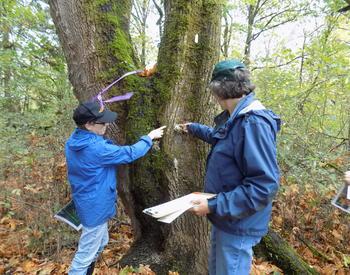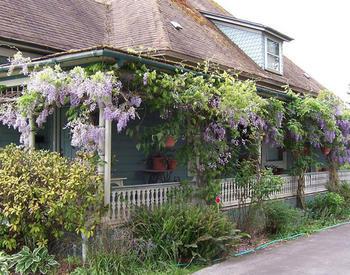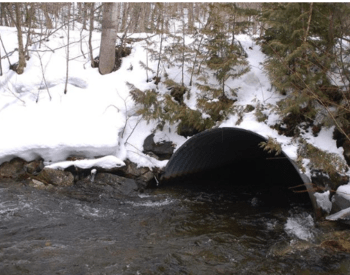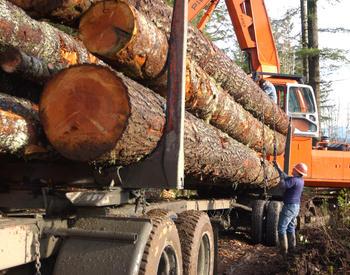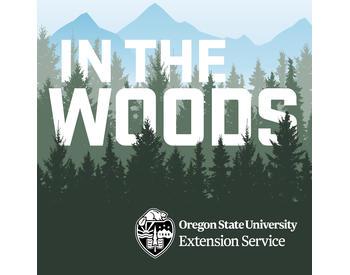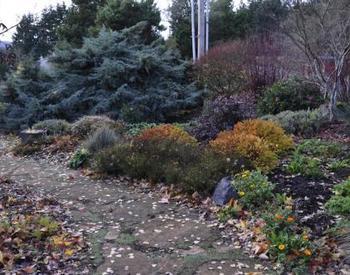CORVALLIS, Ore. – The majestic redwood tree – iconic to California’s northern coast – is becoming more prevalent in Oregon.
“We have landowners in western Oregon growing redwood trees for one reason or another,” said Alicia Christiansen, Oregon State University Extension Service forestry specialist. “There’s everything from something that’s cool in the yard to small woodland owners who plant several acres.”
Christiansen and her colleagues started to notice a possible trend and decided it was time to do a needs assessment in order to identify who is planting redwoods and why. She, along with OSU Extension forestry specialists Dan Stark, Norma Kline, Dave Shaw, Lauren Grand, Glenn Ahrens, Steve Fitzgerald and Jon Souder, formed a Growing Redwoods Group and plan a survey in February.
Once they collect information, the foresters will determine where to put energy as they work with landowners. Christiansen stressed that the group is responding to the needs of a growing number of Oregonians interested in redwoods, not promoting the planting of this species outside its native range in Oregon.
After the survey is completed, the Growing Redwoods Group plans to hold a symposium for Extension forestry faculty and partners to learn about the tree from people who work in various aspects of forestry, including forest health, ecology and fire issues.
“From that point, we will bring the information back to landowners,” Christiansen said. “Our end goal is for people to understand the pros and cons to growing it. It’s a very cool tree, but there’s a lot to think of if you’re going to grow them.”
Redwoods, which are native from the central California coast up to just a bit over the Oregon border, can grow taller than a soaring 350 feet. Very few in the forestry industry grow redwoods outside their native range, but there are some who planted them many years ago and are still waiting for the trees to grow large enough to harvest. It’s not a fast process, Christiansen said.
But in their native habitat, redwoods grow four to five feet a year. The trees thrive near the ocean, where they take in moisture from the fog in their upper canopy. Because water is so important, they don’t grow as fast inland or get as tall unless planted in a homeowner’s landscape where they get supplemental irrigation. Homeowners should think carefully before planting redwoods near homes, roads and septic tank as they can become a nuisance.
Not only that, whoever is growing them has to be sure there’s a mill close enough that’s equipped to handle redwoods. She knows of only one and it’s in southern Oregon, a long way from most people who would – or already are – growing them.
“If you’re not in it for the money and have the right site, it’s a nice thing,” Christiansen said. “If you’re looking for profit for you or your heirs, it depends on when you’ll be able to harvest and how you’ll get it to a mill. That all adds up. They’re not going to waste all those acres of wood.”
An easy-to-grow tree with few pest or disease issues, redwoods are very profitable if grown near a mill, Christiansen said. More profitable than Oregon’s Douglas-fir, redwood is highly valued for its color and ability to wear well, which is why it’s so often the choice for outdoor decks, arbors and other structures.
As beautiful and profitable as they are, redwoods are non-native to most of the state, which brings up the question of what kind of impact it might have on the ecology where they are planted.
“Any time you’re growing a tree of any species outside of its native range there’s always some unknowns about what kind ecological impact it will have,” Christiansen said. “If a landowner transfers to redwoods from Doug-fir, we don’t know the survivability of the species or impact the site.”
Many questions remain, and the group is anxious to start doing case studies, especially of private landowners who have been growing redwoods for 20 or 30 years. There’s a lot to be learned.
“It is a really pretty tree,” Christiansen said. “There’s a lot of appeal about growing redwoods. It’s an emotional thing. It’s not hard to see why someone would want to grow them.”
